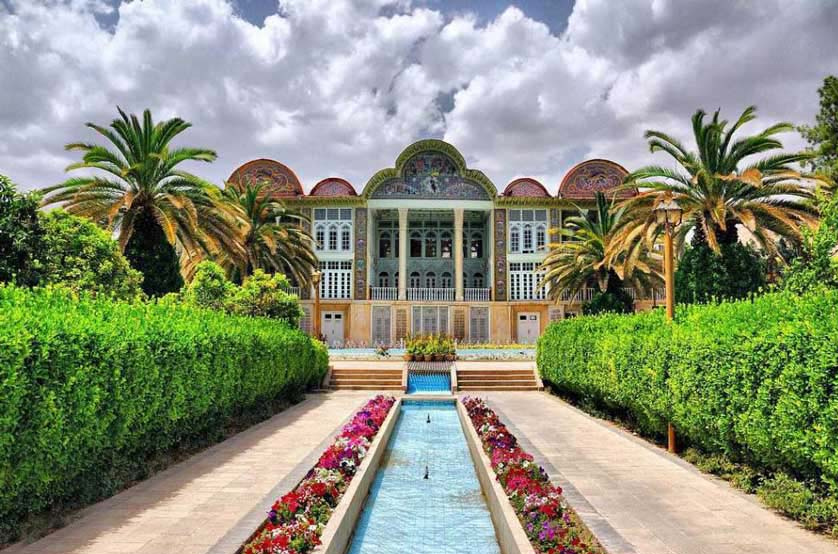Away from traffic is the beautiful Eram Garden (Bagh-e Eram), a garden named after one of the four gardens of Paradise described in the Quran. It is said that the governor of Shiraz visited the Louvre Museum in Paris and accordingly ordered the hike in entry price.
It was created by a chief of the Qashqai clan around 1823, with a house later rebuilt by Hali Mohammed Hasan Mi’mar with reception rooms, an orangery, stables and pavilion. Both garden and buildings were confiscated in 1953 and given to the late shah for his private use; this was when the original mud-brick enclosing walls were torn down and replaced by fencing. Later, the university was permitted to establish a botanical garden.
After the fall Of the Pahlavi regime it was returned to the Qashqai family, but then given back to the university, and today it houses the Law Faculty. Sections of the lower garden are out of bounds, and water rarely runs in the irrigation channels, but it is still a lovely place. Most plants and trees are labelled with Farsi, Latin and common English names.
If you are keen on roses, they are in the formal gardens behind the main building. Entry into the building itself is not permitted, but the exterior is photogenic enough with its late- 19th-century tiling under the roof.
The main panel shows the legendary Sassanid king, Khosrau, coming across the Armenian princess Shirin bathing while to the right is the Quranic/biblical story describing how the beauty of the prophet Yusuf (Joseph) caused the ladies in Pharaoh’s court to cut their fingers while peeling fruit. Above, the meeting of King Soleyman (Solomon) and the Queen of Sheba, Bilqis, is depicted.
There are three other major gardens in Shiraz but two are 20th-century constructions, owing little to the classic Persian garden layout but pleasant enough now the price for foreigners has been lowered.
Eram Garden
December 13, 2021
0 comment

Comment (0)